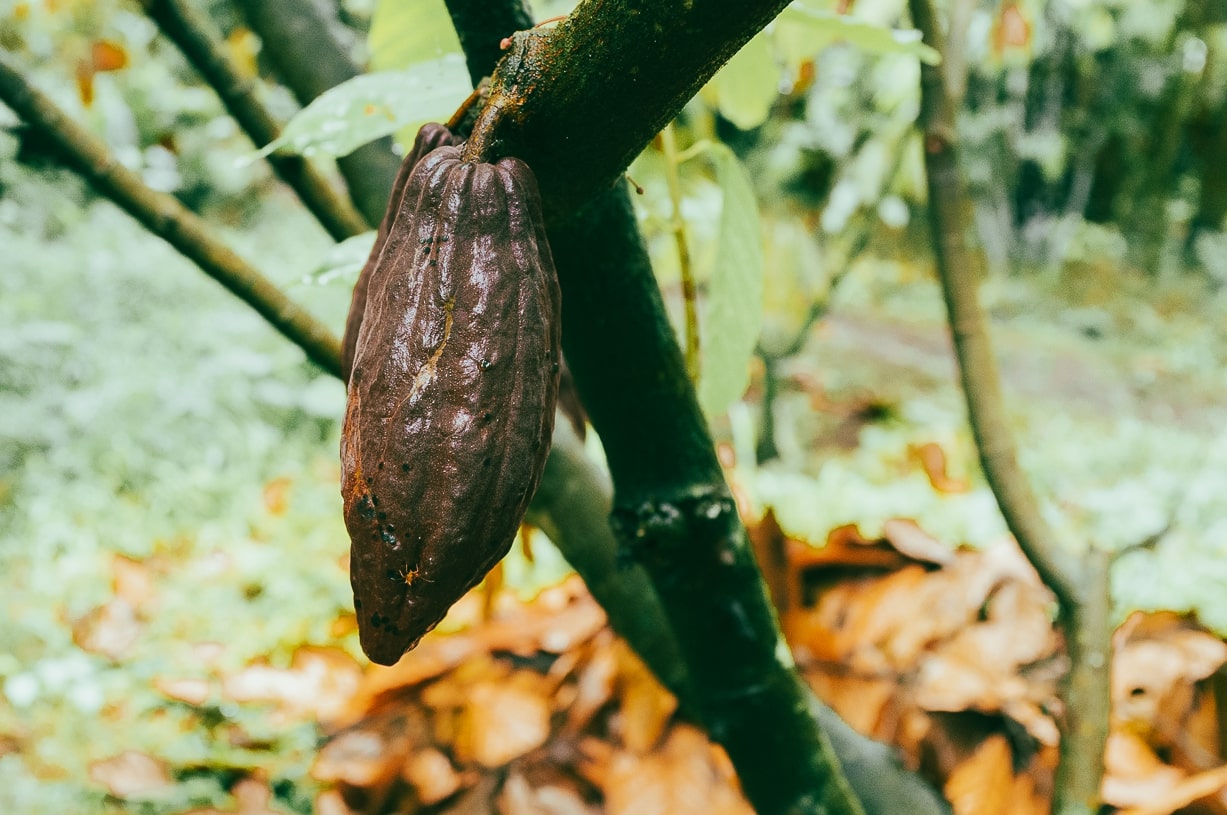
History of Cacao in Indonesia
The chocolate we enjoy daily has an exciting history to explore, especially in Indonesia. Chocolate is a processed food product made from fermented cocoa fruit seeds and sugar (before sugar is added, the processed cacao is called cocoa liquor or cacao mass); the cacao tree (Theobroma Cacao) is a tree originating from tropical forests stretching from the North Amazon to Central America, it was cultivated approximately 5000 years ago by the Olmecs (Mesoamerica civilization).

Olmecs Colossal Head The heads date from at least 900 BC and are a distinctive feature of the Olmec civilization of ancient Mesoamerica.
The earliest evidence chocolate appeared at a cacao processing site in Puerto Escondido, Honduras, in 1100-1400 BC. From this discovery, many suspect that cocoa beans were not only used as a drink but also as a natural sugar for alcoholic and medicinal beverages. Newer discoveries show chocolate residue on pottery used by the ancient Mayans, the first civilization to inhabit the Mesoamerican area of Río Azul, Northern Guatemala; this shows the Mayans drinking a cacao mixture, estimated around 450 BC – 500 BC. Consuming chocolate was considered an important status symbol in their culture. The Mayans consumed chocolate in the form of a bubbly liquid sprinkled with red pepper, vanilla, or other spices and also used it as a form of currency.

Statue depicting Mayan Person Using Cacao As Currency
In Europe, chocolate first arrived in Spain. One of the assumptions, in 1544 AD, was that the Kekchi (Q’eqchi’) delegation from Guatemala visited the Spanish Palace and brought gifts, among which was a chocolate drink. Then cacao became a popular refreshing ingredient used in drinks in the Spanish Palace. Throughout the century, chocolate spread among the European elite.
In 1560 Spain introduced cocoa to its colony. At that time, the Philippines and from there it first entered Indonesia through trade routes in Minahasa, North Sulawesi.
Cacao Development in Indonesia
Criolo of Venezuela is a variety first introduced by the Spanish and cultivated in Sulawesi, then brought to Java. Still in its development, cacao faced many obstacles. It was unable to thrive due to pest infestations and diseases that affected cacao plants and brought cacao cultivation to a standstill.

Venezuelan Criolo
The Dutch then brought Forastero from Venezuela and successfully cultivated it in Java, as it is more resistant to pests and more atone to the climate in Indonesia. The buds of the tree then spread to Sumatra.
Indonesia has only seriously begun cultivating cacao widely in the 1970s. In addition to Indonesians who grew cacao independently, large plantations by both the state and the private sector also grew cacao. Today, Indonesia has become the 6th largest cocoa producer in the world. The production of cocoa beans in Indonesia has decreased significantly caused by attacks pests and diseases such as cacao pod borer and pod rot disease, also the cocoa beans production decreases due to the aging of the cacao plants, unconventional harvesting and changing weather and climate, not to mention that cacao farmres often lack technical assistance, which affects local cocoa production and makes other cash crops, such as palm oil. The estimated area of cacao plantation in Indonesia currently reaches around 1.5 million hectares with around 649,776 tons per year. The largest cocoa productions are in Sulawesi, North Sumatra, West Java, Papua, East Kalimantan, Lampung, and West Sumatra, with 75% of the production is taking place in Sulawesi. Most of them come from smallholder plantations (97%), 1% from large private plantations, and 1% from large state plantations. According to the report, Indonesia produced approximately 170 thousand metric tons of cocoa beans in 2020/2021 and is expected to produce ten thousand metric tons more in 2021/2022.
How About Cacao in Bali?

Bali Cacao Map
In Bali, cocoa was only widely introduced in the 80s, mainly in a few regions, namely: Jembrana, Tabanan, and Buleleng. In present day producing approximately 13,000 tons per year. Balinese cocoa has come along way in terms of quality. At the start, the plant was introduced by the government but cultivation and processing techniques were never taught to farmers. In recent years with the emergence of several independent chocolate producers in Bali, helping to create a good ecosystem for cocoa farmers, especially in improving the quality of cocoa beans, farmers and producers began to cooperate with each other by cultivating and fermenting quality cocoa beans. Now, Bali’s cocoa beans have a distinctive taste and aroma, especially those from Tabanan and Jembrana, making them more and more attractive to chocolate connoisseurs.
Refs:
https://koransulindo.com/kakao-tak-bisa-dilepaskan-dari-minahasa/
https://en.wikipedia.org/wiki/Cocoa_bean
https://ditpui.ugm.ac.id/sejarah-cokelat-dunia/
https://eprints.umm.ac.id/67421/19/BAB%20II.pdf
https://cocoainfo.wordpress.com/cocoa-indonesia/kakao-bali/
https://jakartaglobe.id/context/the-long-road-to-reviving-indonesias-cacao-industry/
